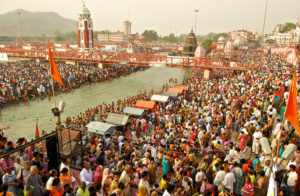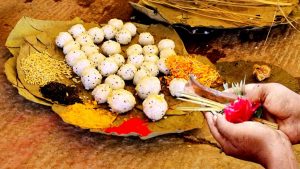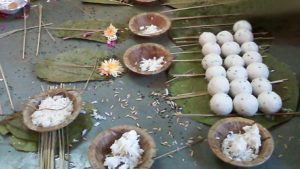Panguni Uthram
Panguni Uthram is one of the prominent days of the year for the Hindus, especially for those from the state of Tamil Nadu, India. This auspicious day falls on the day when the moon transits in the asterism of Uttara-phalguni or Uthiram in the twelfth month of the Tamil solar calendar i.e. Panguni (March-April). It is also the full moon day in the month of Panguni every year, where the Uthiram nakshatram coincides with this full moon day. Thus is regarded as the main specialty of this occasion.
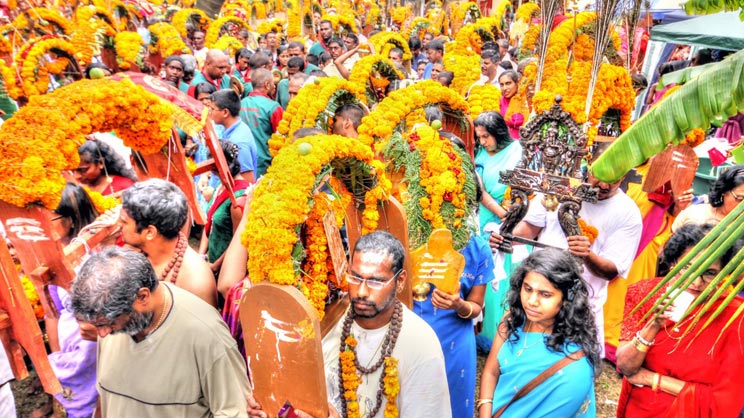
Panguni Utthram is considered the sacred day on which the marriages of Goddess Parvati and Lord Parameswara (Lord Shiva), Murugan with Deivanai, and Aandaal (also known as Kothai) with Lord Rangamannar (Lord Vishnu) took place. It is believed that Lord Narayana married Komalavalli Naachiyar and graced his devotees in his Kalyana Kola (Wedding attire) on this day. According to Valmiki’s Ramayana, Devi Sita’s wedding with Lord Sri Rama took place on this divine Panguni Uttram. Brahmanda Puranam states that on the day of Panguni Uthiram, holy water from various rivers is believed to merge with the Thumburu teertha, which is one among the seven sacred tanks of Tirupati Tirumala.
The auspicious day of Panguni Utthram glorifies grahasta dharma (or the married life of a householder). The divine almighty demonstrates the significance of marital state, in the form of Uma Maheswara, Sita Rama, and Radha Krishna, who sans age or time. (childhood or youth or old age). Devotees celebrate this day by worshipping Lord Shiva and Lord Vishnu, who graces along with their respective consorts in the married state, in temples across the country.
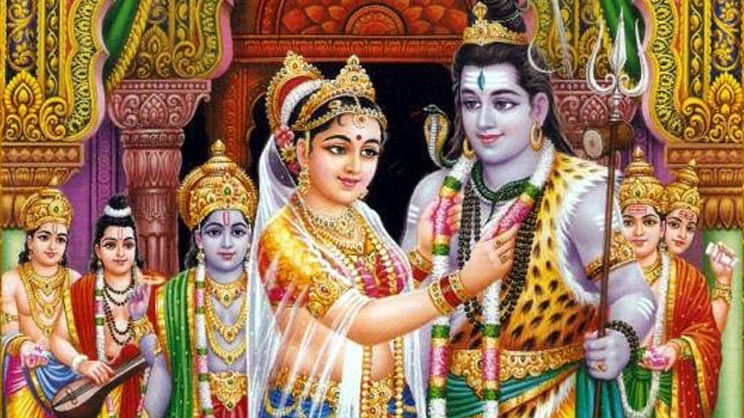
Devotees also carry the holy ‘Kavadi’ in temples dedicated for Lord Subramanya. This practice of carrying the Kavadi is one of the traditional forms of offering prayers to Lord Muruga towards the fulfilment of vows. Devotees carry various forms of Kavadi such as Pal Kavadi, Paneer Kavadi and Pushpa Kavadi. Hundreds of devotees usually throng the temples dedicated to Lord Murugan on this joyous occasion of Panguni Uthiram, which falls in the month of March every year. Special ‘Abishekams’ and Poojas are performed to Lord Muruga, to mark the occasion.
It is also considered as the day in which Lord Ayyappan incarnate in this world. Lord Subramanya (Muruga), is said to have married Sri Deivanai on this day. Goddess Mahalakshmi is also believed to have come out from the Milky ocean (after the ocean was churned by the Gods and the demons) and thus the day is celebrated as Mahalakshmi Jayanti. Since Goddess Parvati married Lord Siva in the form of Devi Gowri, in Kanchipuram on this day, it is also celebrated as the day of Gowri Kalyanam.
History of Siva marries Parvati
Kacchiappa Sivaachariyar was an ardent devotee of Lord Siva, who lived during the 9th century at Kanchipuram, Tamil Nadu. He has vividly elaborated the reason for the celebrations of Panguni Uthiram, in his work, the Kanda Puranam. He describes that Lord Siva married Devi Parvati, the daughter of Himavan, the King of Himalayas, on the day of Panguni Uthiram in the sacred Himalayas. Hence this day is considered holy for the Saivaites, worshipping Lord Shiva. Himavan, the king of the Himalayan mountain met Lord Shiva at the much revered Mount Kailash and gave his consent for the marriage of his daughter Parvati to the Lord on the day of Panguni Uthiram.

Significance
Panguni Uthiram is regarded as the most auspicious day that eliminated troubles in one’s marital life. Marriages performed during inauspicious times or with any doshas (adversities) are believed to lead to trouble and disturbances in the wedding life. Panguni Uthiram is the ideal day to resolve issues after marriage, thereby providing us an opportunity to strengthen relationships. This day also has the powers to nullify all doshas and negative influences pertaining to marriage, which results in a troubled family life.
Reach us to be a part of our whatsapp spiritual reminder group
